Identification of age-specific gene regulators of La Crosse virus neuroinvasion and pathogenesis
- PMID: 37202395
- PMCID: PMC10195820
- DOI: 10.1038/s41467-023-37833-x
Identification of age-specific gene regulators of La Crosse virus neuroinvasion and pathogenesis
Abstract
One of the key events in viral encephalitis is the ability of virus to enter the central nervous system (CNS). Several encephalitic viruses, including La Crosse Virus (LACV), primarily induce encephalitis in children, but not adults. This phenomenon is also observed in LACV mouse models, where the virus gains access to the CNS of weanling animals through vascular leakage of brain microvessels, likely through brain capillary endothelial cells (BCECs). To examine age and region-specific regulatory factors of vascular leakage, we used genome-wide transcriptomics and targeted siRNA screening to identify genes whose suppression affected viral pathogenesis in BCECs. Further analysis of two of these gene products, Connexin43 (Cx43/Gja1) and EphrinA2 (Efna2), showed a substantial effect on LACV pathogenesis. Induction of Cx43 by 4-phenylbutyric acid (4-PBA) inhibited neurological disease in weanling mice, while Efna2 deficiency increased disease in adult mice. Thus, we show that Efna2 and Cx43 expressed by BCECs are key mediators of LACV-induced neuroinvasion and neurological disease.
© 2023. This is a U.S. Government work and not under copyright protection in the US; foreign copyright protection may apply.
Conflict of interest statement
The authors declare no competing interests.
Figures

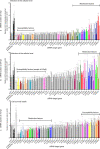
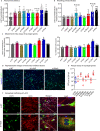
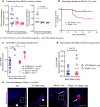
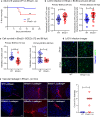
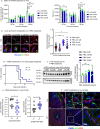
Similar articles
-
Age influences susceptibility of brain capillary endothelial cells to La Crosse virus infection and cell death.J Neuroinflammation. 2021 Jun 3;18(1):125. doi: 10.1186/s12974-021-02173-4. J Neuroinflammation. 2021. PMID: 34082753 Free PMC article.
-
Age-dependent myeloid dendritic cell responses mediate resistance to la crosse virus-induced neurological disease.J Virol. 2014 Oct;88(19):11070-9. doi: 10.1128/JVI.01866-14. Epub 2014 Jul 9. J Virol. 2014. PMID: 25008929 Free PMC article.
-
Lymphocytes have a role in protection, but not in pathogenesis, during La Crosse Virus infection in mice.J Neuroinflammation. 2017 Mar 24;14(1):62. doi: 10.1186/s12974-017-0836-3. J Neuroinflammation. 2017. PMID: 28340587 Free PMC article.
-
Innate immune response to La Crosse virus infection.J Neurovirol. 2014 Apr;20(2):150-6. doi: 10.1007/s13365-013-0186-6. Epub 2013 Jul 12. J Neurovirol. 2014. PMID: 23846288 Review.
-
Impacts of climate, land use, and biological invasion on the ecology of immature Aedes mosquitoes: implications for La Crosse emergence.Ecohealth. 2012 Jun;9(2):217-28. doi: 10.1007/s10393-012-0773-7. Epub 2012 Jun 13. Ecohealth. 2012. PMID: 22692799 Free PMC article. Review.
Cited by
-
The Double-Edged Effect of Connexins and Pannexins of Glial Cells in Central and Peripheral Nervous System After Nerve Injury.Mol Neurobiol. 2025 May 1. doi: 10.1007/s12035-025-04991-6. Online ahead of print. Mol Neurobiol. 2025. PMID: 40310549 Review.
-
Development of an RT-RPA assay for La Crosse virus detection provides insights into age-dependent neuroinvasion in mice.Virol J. 2025 Apr 9;22(1):95. doi: 10.1186/s12985-025-02720-y. Virol J. 2025. PMID: 40205618 Free PMC article.
-
Spatiotemporal profile of an optimal host response to virus infection in the primate central nervous system.PLoS Pathog. 2025 Jan 22;21(1):e1012530. doi: 10.1371/journal.ppat.1012530. eCollection 2025 Jan. PLoS Pathog. 2025. PMID: 39841753 Free PMC article.
-
Current Status of La Crosse Virus in North America and Potential for Future Spread.Am J Trop Med Hyg. 2024 Mar 26;110(5):850-855. doi: 10.4269/ajtmh.23-0160. Print 2024 May 1. Am J Trop Med Hyg. 2024. PMID: 38531108 Free PMC article. Review.
References
Publication types
MeSH terms
Substances
LinkOut - more resources
Full Text Sources
Molecular Biology Databases

